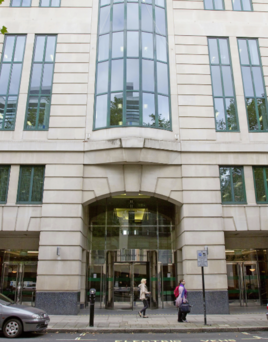Every transport system has two parts. One part moves and the other doesn’t. The moving can’t survive without the fixed, and the fixed is pointless without the moving. The relationship between the two is fundamental to Britain’s railway network and fundamental to any examination of its structure and governance.
But before diving in, let’s look very briefly at why we created railways. They sprang from the waggon ways our forebears built to ease the flow of coal, which was the fuel on which Britain built itself from the 18th century onwards. Those waggon ways provided just enough support and guidance for the wheels of the waggons. No more and no less than they needed.
As time and technology moved on, their materials improved and they became joined together to form networks rather than just a collection of point-to-point lines. From 1825 onwards, the rail network grew and grew. It was better able to cope with Britain’s topography than canals and could efficiently distribute goods around the country, primarily raw materials one way and finished goods the other.
Merchants found they could move things more easily. Fish, meat, cattle, milk and vegetables could be carried by rail into towns and cities. Each had its own freight depots. Most have long gone but those at King’s Cross in London remain, now converted into spaces for arts, culture and education. Their footprint more than rivals the nearby passenger station.
The ability to carry passengers came early but it was freight that paid for the railway (when the railway paid, not all did and many speculators lost money). Through the 20th century, the railways saw their freight edge eroded by growing competition from road hauliers that slowly picked off rural and then urban distribution to eventually leave rail concentrating on bulk haulage, chiefly coal.
But coal was declining as domestic and industrial use fell and is today all but gone with the conversion or closure of coal-fired power stations. Some relief has come for railfreight in the form of intermodal containers but today’s railway is almost exclusively for passengers rather than freight.
Rail is no longer Britain’s primary transport network. It’s ceded this position over the last 100 years in favour of roads. Yet it still plays an important role for passengers, as shown by numbers doubling over the last two decades.
Until last March, that is. Almost overnight passengers disappeared as COVID-19 pandemic restrictions set in. The morning peak in London and other major towns and cities evaporated. Leisure travellers stayed at home and business travellers converted kitchens and spare bedrooms into makeshift offices from which to dial into virtual meetings held over the internet.
Before then, the railway could be described by what it did. If anyone needed a vision of what it was for, they could stand on the mezzanine at Waterloo at 0800 on a weekday. Go back ten, 20, 30 or 40 years and 0800 would look similar, albeit on a smaller scale. For London, as in other cities, the railway moved people to and from jobs. It generally moved them from further afield than bus networks as people balanced the cost of their season ticket with their rent or mortgage bills.
What’s disappeared over the last year could be described as the transport system’s third element - its cargo. Without it, the moving part is pointless and the fixed part irrelevant. That’s where the railway stands today.
Having spent billions on capital projects and operational support, Government ministers have a largely empty, unused railway. And make no mistake, it is their railway. They have owned the tracks - the fixed part - since 1948, save for a brief spell under privatised Railtrack between 1996 and 2002. For most of the years since 1948 they have left other organisations to decide the detail of the moving part of passenger services (within the constraints of the fleet sizes they allowed the nationalised railway to have). When privatisation came in 1996, the Government’s semi-independent Office of Passenger Rail Franchising (OPRAF) set minimum service obligations.
OPRAF disappeared into the Strategic Rail Authority in the 2000s with the SRA setting increasingly detailed specifications for franchises. Then ministers abolished the SRA, taking its functions into their department of state, the Department for Transport. This brings us to today with ministers exercising very tight and detailed control over franchised passenger train operators and detailed control over Network Rail as the public owner of the fixed part of the railway.














